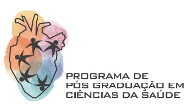Banca de DEFESA: GABRIELA DOS SANTOS RODRIGUES
Uma banca de DEFESA de MESTRADO foi cadastrada pelo programa.STUDENT : GABRIELA DOS SANTOS RODRIGUES
DATE: 29/04/2022
TIME: 15:00
LOCAL: Sala virtual no Google meet: https://meet.google.com/vkb-kjja-xar
TITLE:
Combined approach of inverse virtual screening and ligand-based virtual screening for the identification of protein targets for aphidicolin and new hits against Leishmania major
KEY WORDS:
Leishmaniasis.Aphidicolin. Molecular modeling. Inverse virtual screening.
PAGES: 95
BIG AREA: Ciências da Saúde
AREA: Farmácia
SUMMARY:
Leishmaniasis are a group of diseases caused by more than 20 species of protozoa of the genus Leishmania, prevalent in tropical and developing countries. The existing pharmacological treatment presents serious limitations such as toxicity and parasite resistance, therefore, the search for new therapeutic agents is necessary. Molecular modeling methods are useful to facilitate the design of safer and more efficient antiparasitic drugs, especially from natural sources. There are several bioactive natural products in the literature against Leishmania spp. With unknown mechanism of action, including aphidicolin, a selective inhibitor of viral and human DNA polymerase-α, produced by the fungi Cephalosporium aphidicola and Nigrospora sphaerica. Hence, this work aimed to find potential biological targets of aphidicolin and derivatives through virtual reverse screening. We used Protein Data Bank (PDB) for the search ofL. major targets. The targets selected for molecular docking on the DockThor server are those whose ligands showed steric and electronic similarity >0.5 to aphidicolin and RMSD values< 2 Å. Thus, we considered N-myristoyltransferase (NMT), methionyl t-RNA synthetase (MetRS) and map-kinase(MAPK) as possible targets of a phidicolans. Considering the poor pharmacokinetic and physicochemical properties of aphidicolin and derivatives, we used PharmGist server to align the molecules and to build a pharmacophoric model. We evaluated the model by hierarchical cluster analysis (HCA) and Pearson's correlation in Minitab software. Due to the number of hydrophobic properties, we built a pharmacophoric model for each target and we subjected to virtual screening on the Pharmit server. After that, we filtered the new hits through drug-similar property calculation in Osiris Data-Warrior software, as well toxicity alerts in Derek software and pharmacokinetics on PreADMETweb server. We used SissADME web server to predict water solubility and synthetic accessibility. In the end, we selected only 02 molecules for NMT, 09 for MetRS (02 in common with NMT) and none for MAPK. In order to evaluate a potential dual mechanism, wedocked these molecules in NTM, MetRS and MAPK using DockThor server. Statistical analyzes of the 07 best valuesof binding affinity (∆G) of each complex were performed in the GraphPad Prism software using the ANOVA-one way and ANOVA-two way tests. The results showed that the molecules MP-002-507-460, MP-002-528-375 and MP-002-911-105 exhibited ∆G values significantly comparable to the co-crystallized ligands and superior to miltefosine, used as a negative control. However, we observed considerable selectivity for NMT. After analyzing the interactions in the Disco-very Studio software, only MP-002-507-460 and MP-002-911-105 showed interaction patterns more similar to the positive control. The prediction of biological activity through the PASS server revealed that the two molecules, steroid analogues, exhibited a moderate probability of acting as leishmanicidal agents. Thus, the two molecules found through virtual screening are promising candidates for in vitro assays on LmNMT models to validate the theoretical results presented in this work.
BANKING MEMBERS:
Externo à Instituição - RYAN DA SILVA RAMOS
Externo à Instituição - GLAUBER VILHENA DA COSTA - UNIFAP
Presidente - 2375623 - GABRIELA BIANCHI DOS SANTOS
Externa ao Programa - 1661684 - KELLY CHRISTINA FERREIRA CASTRO




